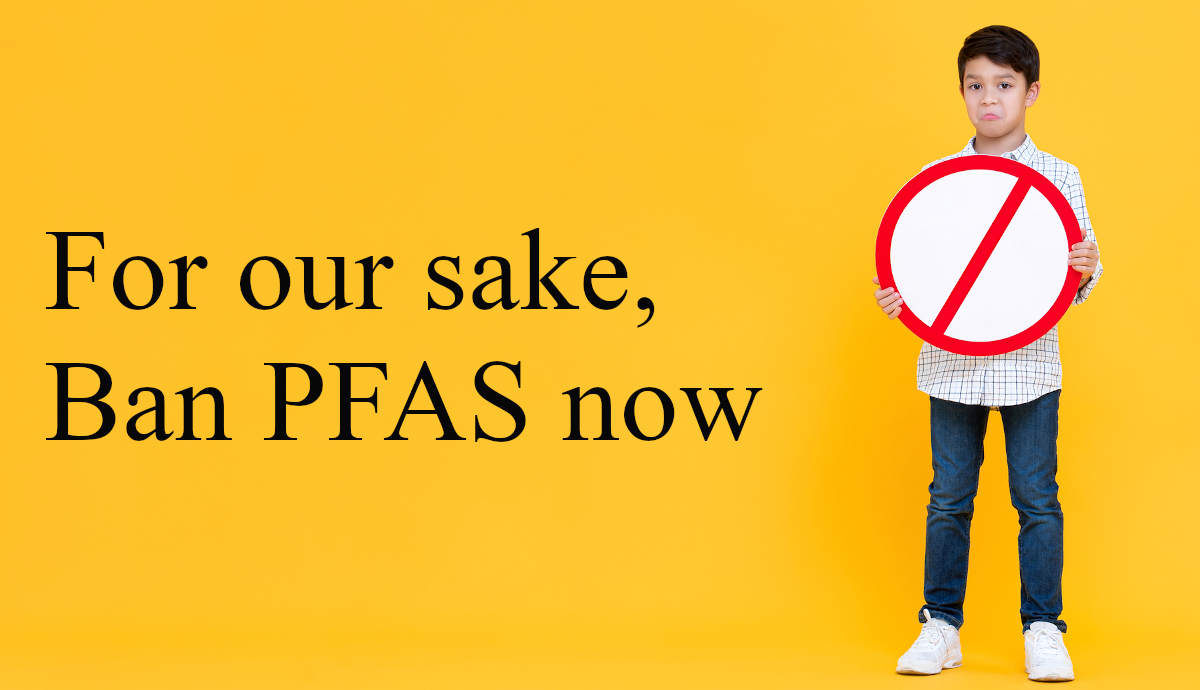Contributed Opinion
By Brian Ronholm
Imagine using a radar gun to detect speeding in cars, but then manipulating the radar so that it only detects speeding in cars going over 100 mph. This means any reading below 100 mph would be considered undetectable and any data results would conceal any problems by showing that minimal or no speeding has occurred.
Based on FDA test results on per- and polyfluorinated alkyl substances (PFAS) in food released last week, the FDA appears to have employed a similar approach when it conducted its survey/testing. The testing methodology used by the agency applied limits of detection and quantitation that likely underrepresented the presence of PFAS in food. Had lower detection and quantitation limits been applied, the FDA likely could have found PFAS contamination in the tested food to be much more pervasive, as the FDA’s own earlier released results and testing at commercial laboratories suggest.
Presenting these test results using this less sensitive methodology unnecessarily minimizes the risk that consumers are facing. PFAS are an ever-expanding group of thousands of man-made toxic chemicals that are widely used to make fluoropolymer coating that allows products to be more resistant to heat, stains, grease and water. Consumers can be exposed to PFAS in myriad ways — food, food packaging, water, clothing, cosmetics, cooking surfaces, etc.
Several PFAS characteristics make them especially dangerous to humans.
First, they are extremely persistent, resistant to breaking down naturally in the environment, and remain in people’s bodies for years. This is why they are often described as “forever chemicals.”
Second, they are highly mobile, spreading quickly and remain prevalent throughout our environment. Finally, they can be toxic at very low doses and have been linked to a variety of severe health effects, including an increased risk of cancer, thyroid disease, and birth defects.
The high detection level the Food and Drug Administration used for this survey is only part of the reason to be skeptical of their results. The FDA’s current PFAS testing method is only capable of detecting and quantifying 16 of the more than 600 PFAS that are currently in use. The agency itself has acknowledged that their sampling is very limited.
Returning to the radar gun analogy — in addition to the radar only being able to detect cars going over 100 mph, it’s further limited in that it can only measure 16 of more than 600 cars that pass by the radar; this means hundreds of cars going over 100 mph still would go undetected because the radar gun is only equipped to detect 16 cars.
Yet another issue of concern about the FDA’s PFAS testing methodology is that none of the PFAS tested were ones approved for food packaging. This was a missed opportunity, as the FDA could have provided updated data on how much PFAS in food packaging leaches into food products. The Environmental Working Group (EWG) found nearly half of fast food wrappers collected in 2014 and 2015 had high fluorine counts, a reliable indicator of PFAS use in food packaging products.
Granted, testing for PFAS in food can be difficult. There are many PFAS chemicals for which there are no analytical standards and many complex food matrices that can hinder unbiased detection and quantification of PFAS chemicals.
Also, serious efforts to develop test methods for investigating the occurrence of, and potential exposure to, PFAS chemicals from food began only recently, so there currently are no robust methods that could be used to test and report on an adequate number of food-relevant PFAS chemicals.
However, in releasing these misleading test results, the FDA is conveying a false sense of security about PFAS contamination in food that has the potential to be harmful, especially in the long-term. If the FDA would like to do something meaningful, they should move quickly to ban PFAS in all food packaging.
Brian Ronholm is the Director of Food Policy for Consumer Reports. He leads CR’s advocacy efforts to advance a safe and healthy food system. He previously served as Deputy Under Secretary for Food Safety at the U.S. Department of Agriculture (USDA) and, prior to that, served in the office of Rep. Rosa DeLauro of Connecticut.
(To sign up for a free subscription to Food Safety News, click here.)

